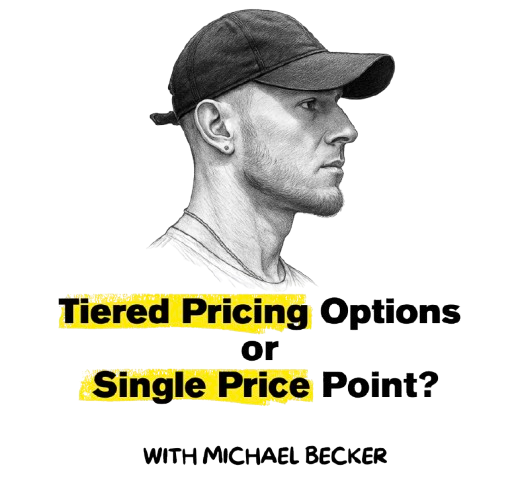Your cart is currently empty!

Tiered Pricing Options or Single Price Point?
Pricing structure is one of the most popular questions I get.

For service or client based companies, you essentially have two options: you can have a multi-tiered offer where prospects can choose which one they want, or you can have a single option.
For a tiered offer, you can empower your customers because when they pick what they want, it’s going to feel like it’s their choice. They get to make the ultimate decision on which product they buy, which reinforces the confidence in making that buy decision. But, whenever you give people optionality, it does introduce the risk of conflict or deliberation in that person’s mind. So that’s the down side.
For a single product, one price, one pay plan, there’s no alternative. And so, the only question to be answered is either “yes” or “no,” which is a cleaner path to purchase.
So, which one is better — one price or multiple options? Honestly, there’s no right or wrong way to do it. Truly, your product, packaging and pricing should reflect the value you can provide in the way that will deliver most benefit for customers.
For most non-subscription info products or high-ticket products, I recommend a sort of hybrid model. This would be a singular offer that’s “masked” up front then customized for individuals on the back end, after further discovery.
After your sales process, you can present the custom price and be prepared with a step down offer or a down sell if the customer does not like it. So you’d really have two or three package ideas in your back pocket. it’s sort of a tiered offer wrapped up and positioned as a single option, but you have those contingencies in place behind the curtain.
This removes the optionality but enhances confidence. It takes you from competing to excelling, and takes your offer from a purchase to a personalized proposal — a great game to be playing.

Leave a Reply